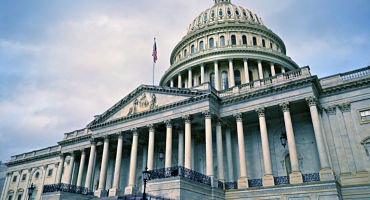The decisive victories in November of Donald Trump and the Republican Party appear to be a mandate for meaningful change that will influence the US economic outlook in 2025 and beyond. While the GOP’s ambitious agenda is expected to increase US inflation, its impact on economic growth should be more mixed, depending on the scale and sequence of policy measures enacted. The incoming administration expects to reset trade relations with the threat of tariffs, tighten immigration laws and deport undocumented immigrants, broaden industry deregulation, and consider new ideas for increasing US government efficiency. A Republican-controlled Congress will focus on maintaining personal income tax rates passed under the Tax Cuts and Jobs Act (TCJA) of 2017 — which are set to expire at the end of 2025 — and possibly cutting some corporate taxes further.
All this change implies heightened volatility for US companies, consumers, trading partners, and financial markets. The Fed is already shifting its thinking on monetary policy recalibration, with two negative supply shocks possible in 2025: a constricting labor supply and higher tariffs.
President Trump inherits a solid, though uneven, economic expansion
The administration’s starting point is a relatively good economy that has made tremendous progress on disinflation and established better balance in the labor market. Still, the economic expansion has been uneven, with high costs of living and recently high interest rates weighing on corporate and consumer sentiment. Consumer incomes normalized meaningfully in 2024, as inflation receded and as wage growth and employment gains slowed. While spending on goods remained lackluster, services spending by high-income consumers seeking experiences such as travel was a hallmark of the year. Next year should bring moderate consumer spending and better balance between goods and services spending.
Housing remains a weak spot in the US economy. The 50% gain in home prices since the pandemic, compared with a smaller 25% increase in household incomes, has undermined housing affordability. If mortgage rates remain elevated, it is plausible that the benefits of renting over owning a home persist a while longer. Compounding the problem are the low turnover of existing homes and the still-insufficient supply of new homes being built. After declining for the better part of two years, this stagnation means that the sector has been recovering in fits and starts and remains hostage to the interest-rate environment.
Investment spending, in aggregate, was tepid in 2024, dragged down by a correction in commercial property construction along with the broad-based decline in goods spending that has occurred post the COVID boom. Despite overall weakness, however, the Inflation Reduction Act (IRA), CHIPS Act, and artificial intelligence boosted investment spending in certain pockets of the economy. Some measures in the IRA, including spending on electric vehicles (EVs) and renewable energy, as well as part of the CHIPS Act, will be under increased scrutiny as Congress aims to pass a fiscal budget. Still, Washington’s focus on US industrial policy suggests that new incentives for domestic manufacturing could be established.
Areas of focus for the new administration
Trade: The correction in the goods economy worldwide has slowed global trade appreciably over the last few years. Tariffs are a renewed threat for many US companies with overseas exposure, as well as for those US trading partners whose exports are a substantial contributor to their economies’ growth. Some companies may try to increase imports in the near term to circumvent or precede tariffs; however, the generally diversified base of operations for most multinationals should allow for better overall trade management if targeted tariffs emerge.
Overshadowing the trade discussion is the ongoing economic decoupling from China, which remains a priority for policymakers, just it was with Japan 40 years ago (Figure 1). While China is the priority, bilateral trade deficits with Germany and even Mexico (the US’s second-largest trading partner) will be on the radar. Broad-based tariffs would likely dampen economic growth and be a major challenge for companies, denting both profitability and margins, especially if countries choose to retaliate against US measures. Trump’s overarching theme of protectionism will continue to reverberate in shifting trade dynamics across the global economy.















Monthly Market Review — February 2025
A monthly update on equity, fixed income, currency, and commodity markets.
By
Brett Hinds
Jameson Dunn